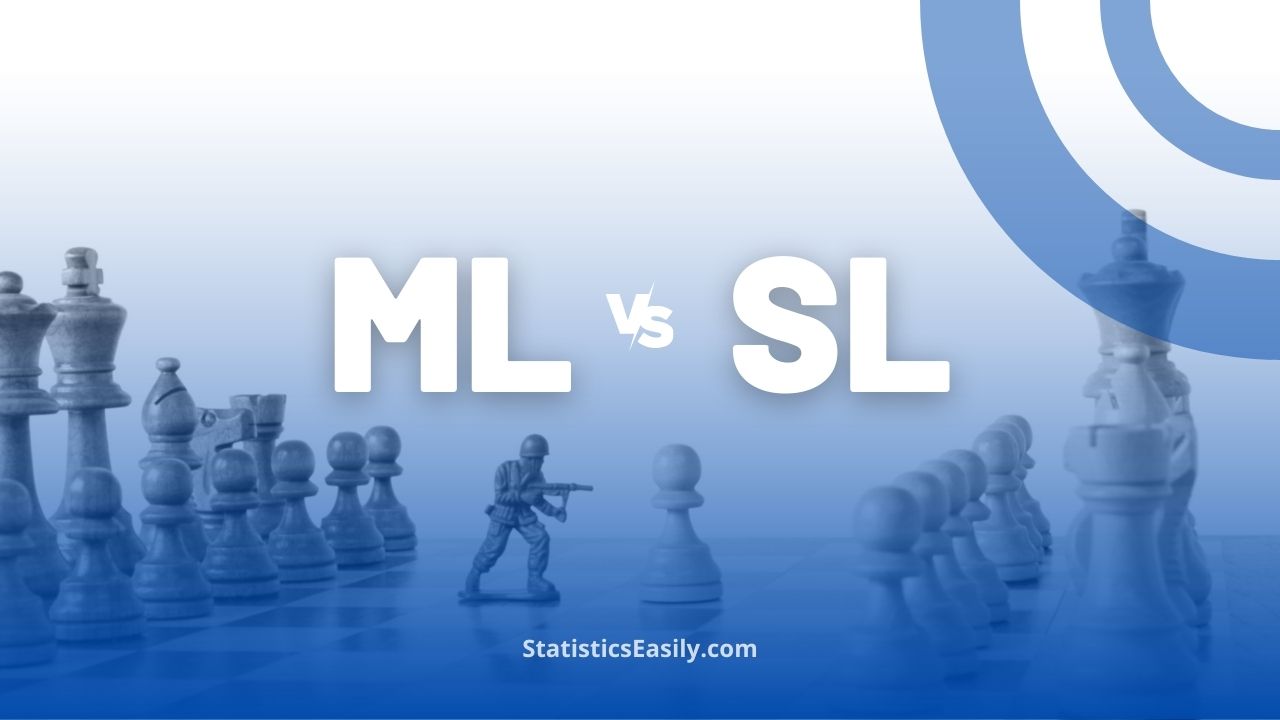Machine Learning vs. Statistical Learning: Comparing Core Principles
You will learn the critical differences between Machine Learning and Statistical Learning.
Highlights
- Machine Learning originates from computer science and artificial intelligence, while Statistical Learning stems from statistics.
- Machine Learning focuses on algorithm design for data-based decision-making without explicit programming.
- Statistical Learning is centered on building mathematical models to understand and interpret data.
- Statistical Learning models are more interpretable and often use simpler, linear models.
- Machine Learning prioritizes optimizing predictive performance and computational efficiency.
Machine Learning and Statistical Learning are overlapping but distinct fields within the broader realm of data science.
They both involve using algorithms to build models from data, with the ultimate goal of making predictions, drawing inferences, or identifying patterns.
However, they differ in their focuses and methodologies.
Definition for: Machine Learning
Machine Learning (ML) is an artificial intelligence subset that enables computer systems to automatically learn and improve from experience without explicit programming, using algorithms to analyze data, identify patterns, and make data-driven decisions.
Definition for: Statistical Learning
Statistical Learning (SL) is a branch of statistics that focuses on building mathematical models to analyze and interpret data, emphasizing understanding underlying patterns, structure, and uncertainty while making inferences and predictions using formal statistical methods.
Origins and Perspectives
ML has its roots in computer science and artificial intelligence.
It focuses on designing algorithms to learn from and make data-based decisions without being explicitly programmed.
ML techniques focus more on optimizing performance, usually emphasizing large-scale datasets and computational efficiency.
SL, on the other hand, stems from statistics.
It is centered around building mathematical models to understand and interpret data, often focusing on understanding the underlying structure and uncertainty in the data.
SL techniques place greater emphasis on model interpretability and inferential aspects.
Terminology and Methodology
ML practitioners often use different terminology than statisticians.
For example, we talk about “training” and “test” datasets in ML.
In contrast, the terms “estimation” and “validation” datasets might be used in SL.
ML methods are more algorithmic and iterative, while SL techniques are based on formal statistical methods.
Model Complexity
ML models can be highly complex and non-linear, using neural networks and deep learning techniques.
This can lead to improved predictive performance, but sometimes at the expense of interpretability.
In contrast, SL models are more interpretable and often use simpler, linear models.
Model Evaluation
ML emphasizes prediction accuracy and performance metrics, such as precision, recall, and F1 score.
SL is more focused on model assumptions, hypothesis testing, and confidence intervals to understand the statistical significance and uncertainty in the model.
Regularization
Both fields use regularization techniques to prevent overfitting.
Still, ML often relies on more computationally intensive methods, such as Lasso and Ridge regression or dropout for neural networks.
SL may use techniques like subset selection, dimensionality reduction, or simpler model structures to avoid overfitting.
| Aspect | Machine Learning | Statistical Learning |
|---|---|---|
| Origin | Computer Science, Artificial Intelligence | Statistics |
| Focus | Algorithm design, data-driven decisions | Mathematical models, data interpretation |
| Terminology | Training and test datasets | Estimation and validation datasets |
| Model Complexity | Can be high, non-linear (e.g., neural networks) | Often simpler, linear or generalized linear models |
| Model Interpretability | Can vary, may be less interpretable | More interpretable, emphasizes inference |
| Evaluation Metrics | Prediction accuracy, precision, recall, F1 | Hypothesis testing, p-values, confidence intervals |
| Regularization | Lasso, Ridge regression, dropout | Subset selection, dimensionality reduction, Ridge regression |
| Computation | Can be computationally intensive | Can also be computationally intensive but often less so |
| Scalability | Well-suited for large-scale datasets | Can be adapted to handle large datasets, but may require additional methods |
| Objective | Optimizing predictive performance | Understanding data structure, uncertainty, and making inferences |
Conclusion
In summary, Machine Learning and Statistical Learning aim to learn from data but have different perspectives, methodologies, and priorities.
ML is typically more focused on optimizing predictive performance and computational efficiency.
At the same time, SL emphasizes model interpretability, statistical inference, and uncertainty quantification.
Both approaches are valuable in data science, and practitioners often use a combination of techniques from both fields to address real-world problems.








